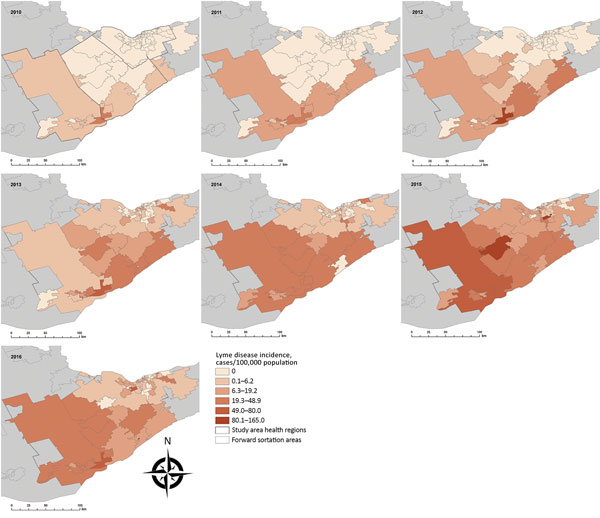Volume 25, Number 2—February 2019
Dispatch
Lyme Disease Emergence after Invasion of the Blacklegged Tick, Ixodes scapularis, Ontario, Canada, 2010–2016
Figure 2

Figure 2. Spatiotemporal spread of human Lyme disease incidence, 3 public health units, eastern Ontario, Canada, 2010–2016. Annual Lyme disease incidence estimated from notifiable disease surveillance and population data based on forward sortation area of patient residence.
Page created: January 18, 2019
Page updated: January 18, 2019
Page reviewed: January 18, 2019
The conclusions, findings, and opinions expressed by authors contributing to this journal do not necessarily reflect the official position of the U.S. Department of Health and Human Services, the Public Health Service, the Centers for Disease Control and Prevention, or the authors' affiliated institutions. Use of trade names is for identification only and does not imply endorsement by any of the groups named above.